28 April – 2 May 2023
By Gabri Martínez
When I was a kid I visited many places in Spain, England, France, Canada… and all was similar to my home so the greatest impact in my life was in October 2007 when I visited Morocco for first time with Luis G-C and JAMB. We crossed in ferry to the port of Tangier city and when we arrived all was a mess. Donkeys, very old cars, bicycles and lots of people everywhere. Every place we stop for herping we saw lots of animals because the habitats were amazingly conserved. That was my first trip to Africa, and that changed my life, my mind and everything.
I got some holidays and bought very cheap flights Malaga-Tangier. This was my 27 trip to Morocco and indeed my saddest trip. My top 3 for the trip was Vipera monticola saintgironsi, a big specimen of Natrix astreptophora of uniform green color and Psammodromus microdactylus. I didn´t get any of my targets. But that was not the main reason. At the end of this report I will explain why this was my saddest trip ever.

28 April 2023
The flight arrived very late to Tangier. I picked up my car from AVIS and drove directly to the Middle Atlas. I made a fast stop in La Mamora forest, and everything was extremely dry. Very late in the night I stopped the car for sleeping few hours

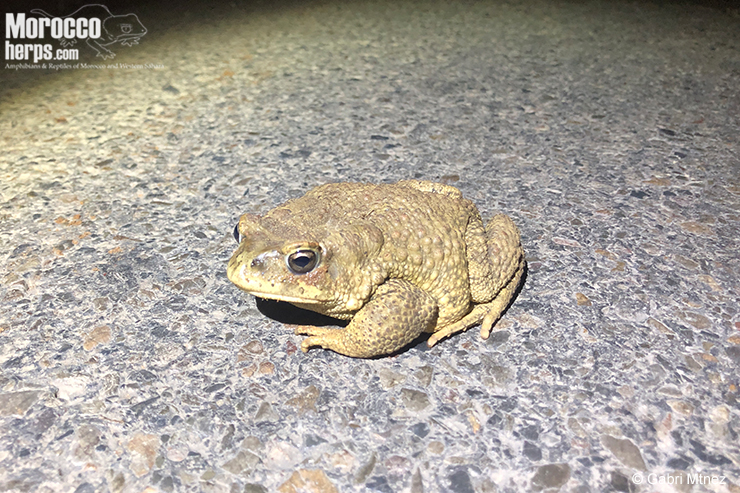
29 April 2023
I woke up and drove directly to a Middle Atlas spot where it was found an adult female Vipera monticola saintgironsi (then published as Vipera latastei gaditana). It was my third visit to the area after visiting it with Budi and Marco (August 2013) and with Raul, Ander, Rafa and Ana (April 2017).
The area was very dry to be an area up to 2200 masl. The stream that had water in the previous trips was dry. In the moment the sun hit the ground began to appear the first lizards, very close to spiny bushes: Psammodromus algirus in the south slope and Podarcis vaucheri and Scelarcis perspicillata in the north slope. The clouds appeared and dissapeared and the temperature of aprox. 18 degrees showed a perfect moment for snakes and few minutes later I saw for first time in my life a Coronella girondica basking. I took some fast photos and continued the search. After 2 hours the temperature became very hot and over 4 groups of goats appeared everywhere, so I decided to flip some stones and I got to see a nice Timon tangitanus.




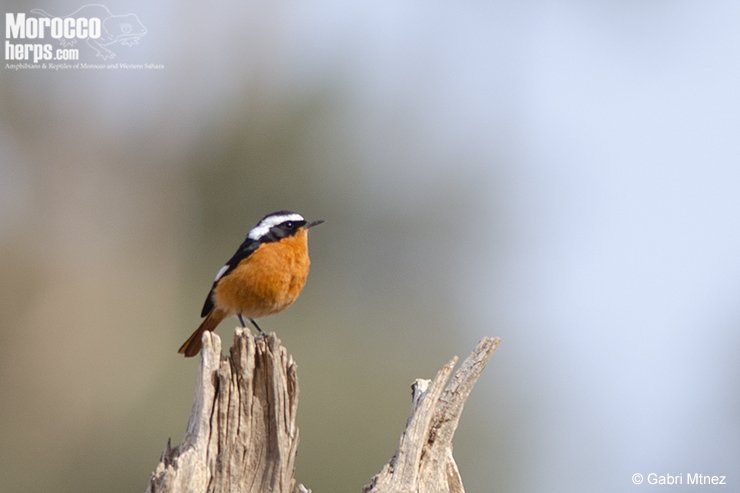
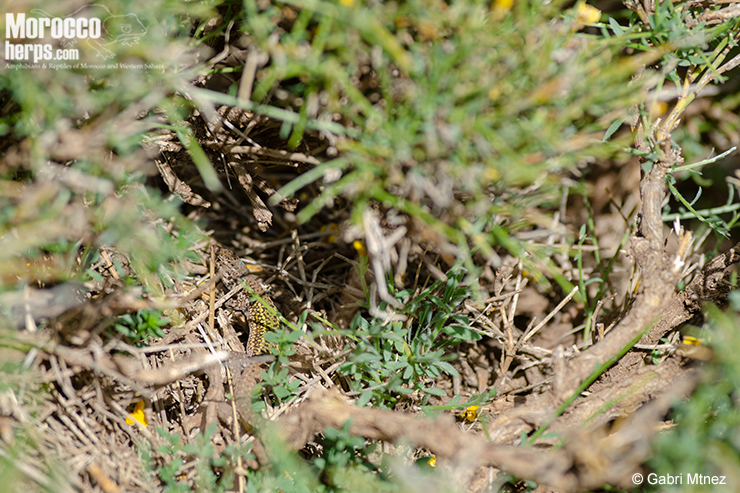
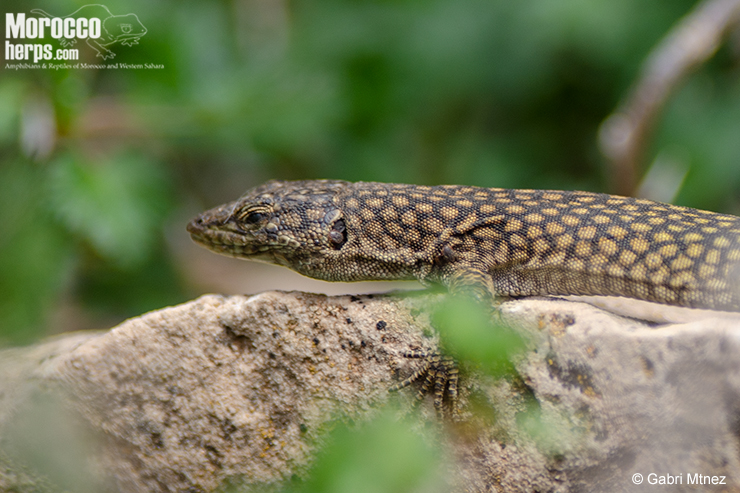



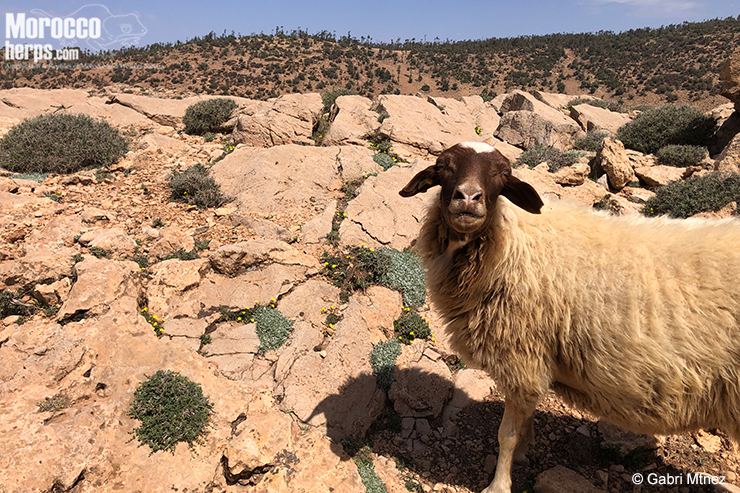
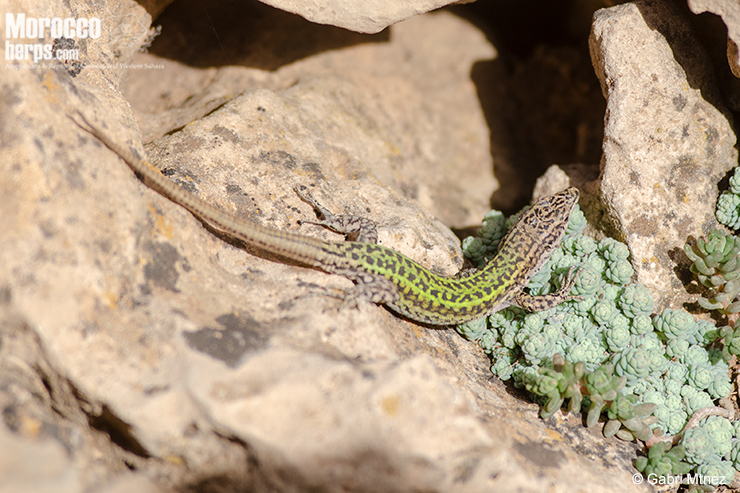

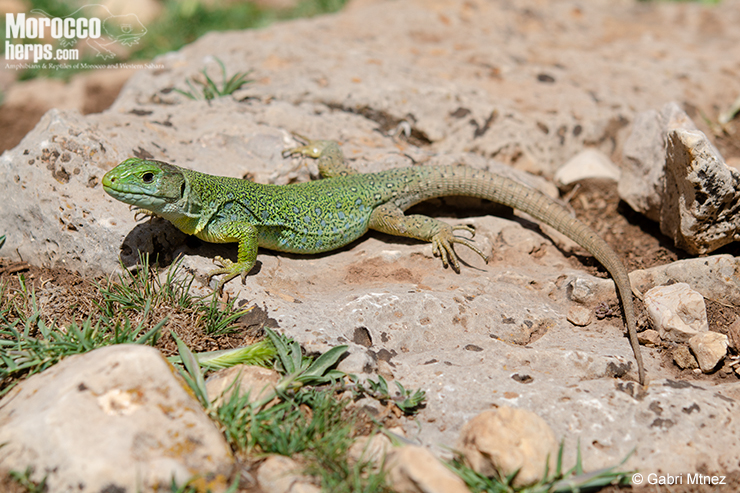

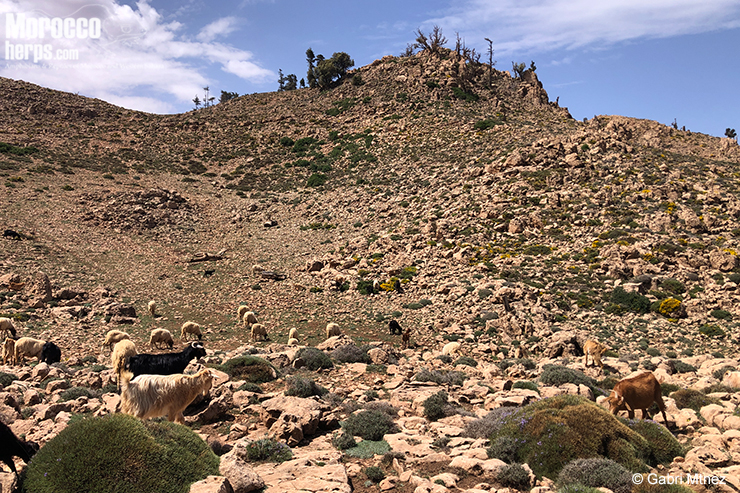

After eating I visited another spot. There weren´t previous records of Vipera there but from Google it looked a good place. It was the north slope of a rocky mountain, covered by snow lots of months of the year so all was very green. Walking a bit at midday I found some lizards active (Podarcis vaucheri, Timon tangitanus). A shepherd came to me and ask what I was doing. I showed him a photo of a Vipera latastei and Vipera monticola and he told me that he had never seen these snakes, and he showed with the open arms like a huge snake. I showed him a photo of Malpolon monspessulanus and he clearly agreed that was the snake in the area. It was a place at 2117masl, north slope and with high humidity so I though he was wrong. Finally we said bye bye one to each other. When I was in the car preparing to visit another spot the shepherd came to me and said by signs to join him. I expected he would show me a shed or a hole, but he kept me to a ruins where I could see a part of a huge snake basking. The shepherd got a small stone (I am sure he wanted to throw it to the snake) but then I jumped to the snake and caught it. The brave Malpolon monspessulanus or aprox. 1.80cm began to make “puffy” noises so the shepherd was very nervous and making me signs to cut the head of the snake. I told him to make photos and he was looking to me and the snake with total fascination. After the photos I offered him to touch it but he was completely scared although by signs I explained him the snake was not a hazard to him or his goats. When I was going to release the snake he began to shouted me very aggressive. So I told him that didn´t worry I would keep the snake and release it very far. So I said bye bye and take the car and some meters away I released the snake. Probably that huge snake will return to his refuge and the shepherds will kill it. But I thought it was the best. Move that snake to another territory it is a crazy idea with unexpected consequences…




After that strange experience I stopped to a lagoon where I saw some terrapins, frogs and a very nice Viperine Snake. In the way I found a DOR adult female Malpolon monpessulanus.
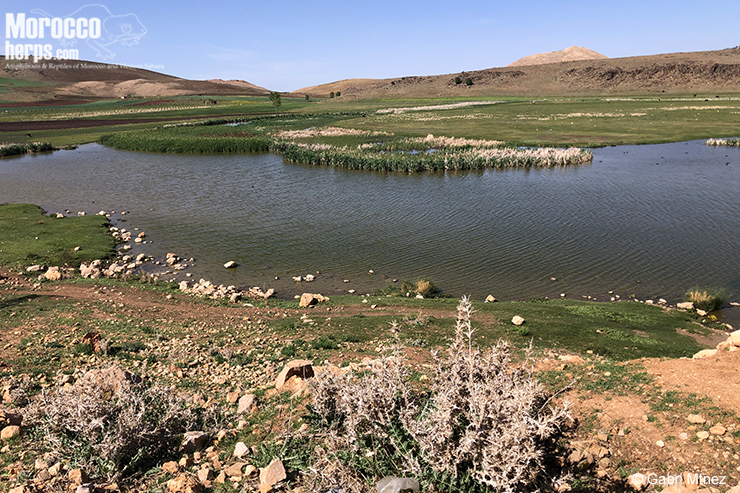







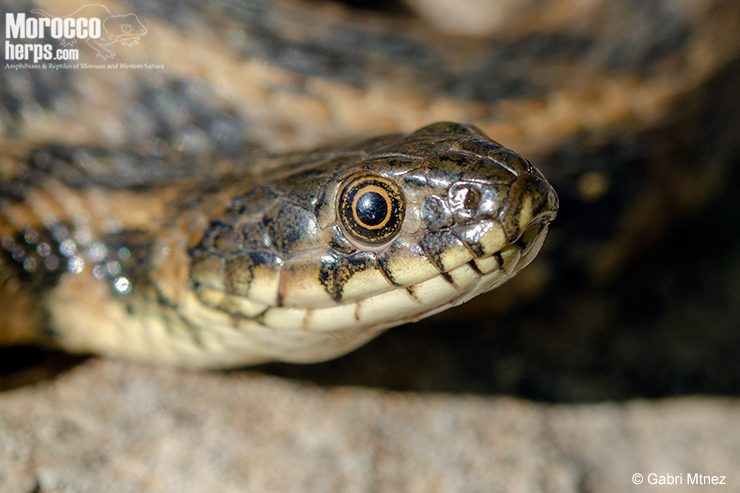
30 April 2023
I woke up early in a hotel close to the mountains (85DH the night!!) and drove to the known Vipera spot for a last chance. In two hours with good temperature, I only got to see again some birds, Podarcis vaucheri and Scelarcis perspicillata, so I decided to begin to drive to the second spot of the trip: AZILAL.
Between the Middle Atlas to Azilal there is about 4-5 hours of driving, and I didn´t find any reptile dead on road. In a fast stop I flipped a stone and found a subadult Agama bibronii.

Azilal area is full of agriculture fields, but there are still some patches of natural vegetation (e.g. Chamaerops humilis) that seems to be probably the last or one of the last refugees of the extremely endangered Psammodromus microdactylus. In the evening it was very sunny but windy and I didn´t find any reptile species active. The night began and I made a bit of road crossing around the area, that seems apparently good for Daboia mauritanica, Macroprotodon brevis, Hemorrhois hippocrepis… however I didn´t find any amphibian or reptile active so finally I began to sleep.


1 May 2023
With the first moments of sun of the day I began to check the Chamaerops humilis in the spot where my friend Mario Schweiger found one specimen of P. microdactylus in 2010. Unfortunately, no activity of lizards although the temperature was good and there were no sun. Even no Psammodromus algirus or any Acanthodactylus species in the area active. I flipped some stones and found a huge male Eumeces algeriensis.




The temperature was getting warmer and I moved to the In Den Bosch spot. Lots of small palm trees and groups of rocks looks amazing for lizards but I didn´t see reptile species active and then I saw a domestic cat jumping out of a big rocky crest. I walked to the place where the cat jumped out and found a big black snake entering in a hole. I examined that large Hemorrhois hippocrepis and it was brave and healthy except for a damage in the first part of the body, probably caused by the cat. I took some photos and left the snake in the exactly place where it was. When I returned to my car that was close to some houses I saw two baby cats, one with same colors of the one that probably attacked the snake. I wonder if the cat attack that snake, what it would do with the small Psammodromus?





Finally I visited a third place that looks good for lacertids, but only saw an Agama active, so I decided to leave Azilal and drive for the last spot: the western Rif Mountains.



The fastest way to reach the Riff Mts was the highway so I drove from Azilal to Marrakech. In the way I could see some Tarentola mauritanica and Agama bibronii when I had the bad to luck to see a Testudo graeca recently hit by cars. The poor animal looks extremely bad and I put out of the road, fortunately it was already dead. 5 minutes later I saw a chameleon in the middle of that busy road. I stopped the car and ran like if there is no tomorrow and got to catch alive that poor animal with cars and motorcycles passing in both sides. It was a miracle that was alive. I left it in the side where it was crossing to and continue the trip. In the Marrakech area I saw some Agama bibronii basking in the top of rock groups.






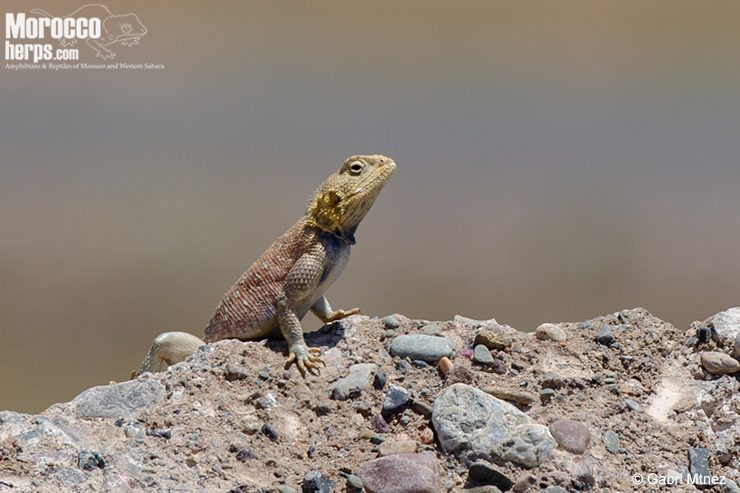
The highway Marrakech to Tangier is really well done and the trip was easy. In the evening I arrived to the exit direction to the Riff and I got to reach the Riff and find fast first herp species: an adult Mauremys leprosa, 2 Podarcis vaucheri and a Salamandra algira larvae.

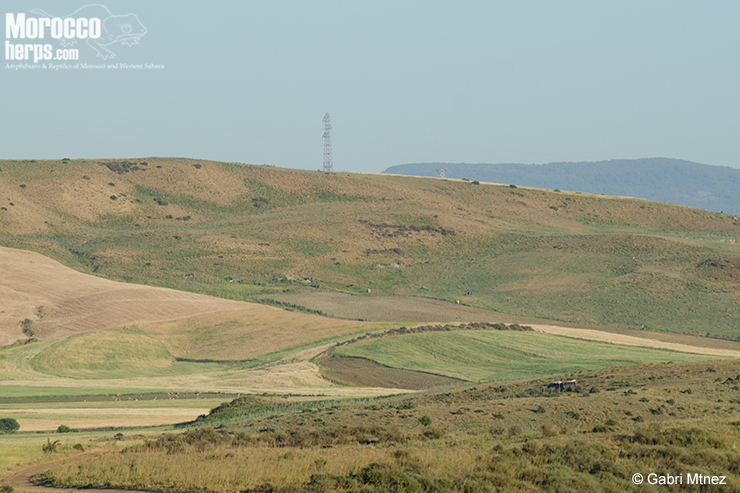





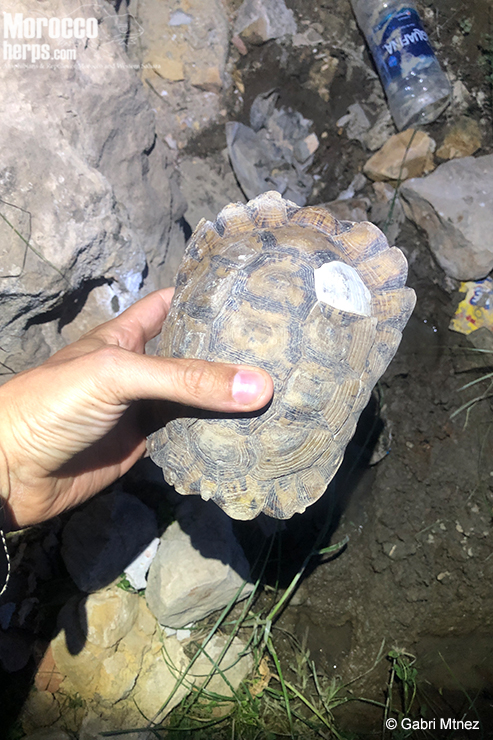



The western Rif mountains was much more humid than the Middle Atlas or Azilal and in some water courses I got to see plenty of amphibians: Salamandra algira juveniles, Pelophylax saharicus, Bufo spinosus, Sclerophrys mauritanica, Hyla meridionalis and also 2 reptile species: 4 Natrix maura and a Chalcides colosii.

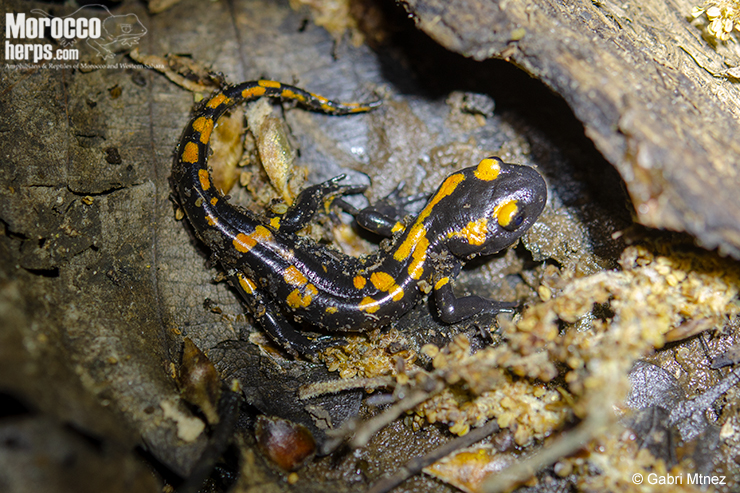







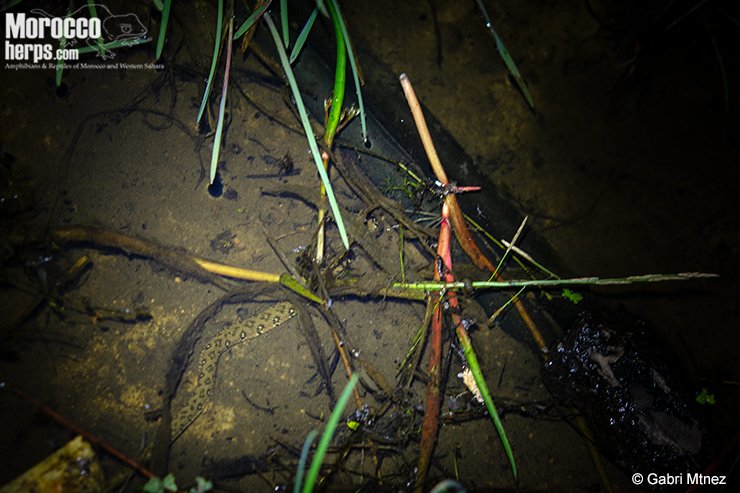
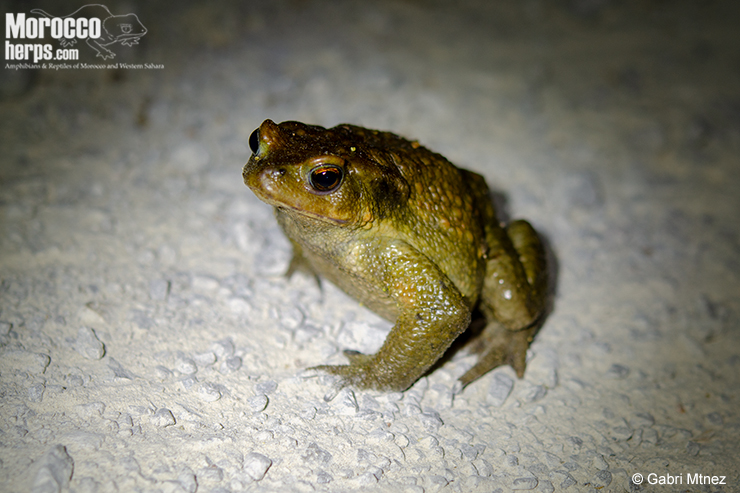
2 May 2023
I woke up in an amphibians paradise.


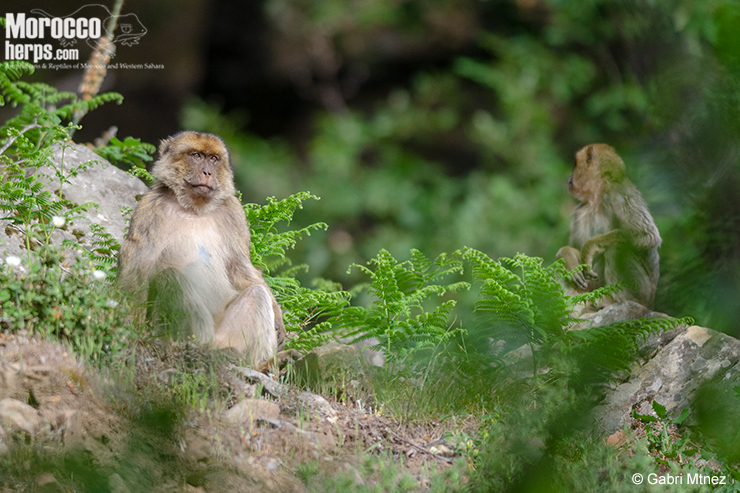








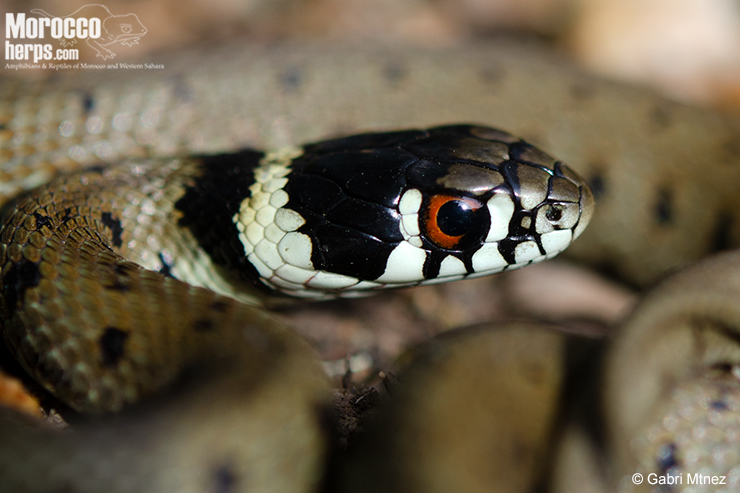




I had to return to the airport and I passed by many places that I knew by Google Earth that were burned. A huge area of the Western Riff Mts., including the place where I saw my first Natrix astreptophora of Morocco, has been destroyed. Big forests full of endemic species disappeared. I made a fast stop in a group of rocks in a burned area and surprisingly I was a big Malpolon monpessulanus basking. There were no bushes or trees or nothing because all was burned so I could see the snake very easily.





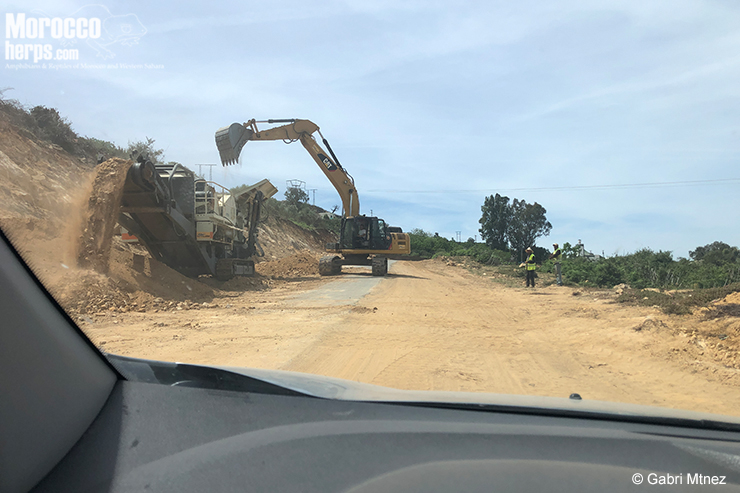
Finally I arrived to the airport and returned to Málaga. The trip in number of species was not bad and I enjoyed again of numerous amazing species of Morocco. However these animals don´t avoid that I got a really bad impression of Morocco. South of the High Atlas the problems for the herpetofauna are numerous, but nothing in compare with north Morocco. New roads and trails are building constantly. New roads allow new people settlements that mean even in natural parks or natural habitats in general more goats, more cats, more hoses extracting the water of the habitats to agriculture fields. The Global Warming and the extraction of the water in the habitats are probably provinking more and more fires that destroy the habitats and allow the expansion of species like Malpolon monspessulanus, Hemorrhois hippocrepis or Agama impalearis and the extintion of many populations of Vipera monticola, Natrix astreptophora, Emys orbicularis, Alytes maurus… that will become very endangered soon, following the way of Chalcides ebneri or Psammodromus microdactylus.
The solutions for these problems don´t seem easy and sadly Morocco is not the Morocco of 15 years ago, and I am scary about the Morocco we will see in 15 years. Or they put a limit to the habitat destruction or they will be even worse than Europe very soon…
Ackowledgements
Specially thanks to Mario Schweiger for the info about P. microdactylus. Also to Marco Sassoe, Sonke Frahm, Alex Carreras, Ander Izagirre and Abdellah Bouazza for help during and after the trip.
References
- Bosch HID. 2005. Psammodromus microdactylus (Boettger, 1881), a rare lizard species? Podarcis 6 (1/2): 2-35
- Fahd S, Barata M, Benítez MI, Brito JC, Caro J, Carvalho S, Chirosa Rios M, Feriche M, Herrera T, Márquez Ferrando R, Nesbitt D, Pleguezuelos JM, Reques R, Rodríguez MP, Santos X, Sicilia M & Vasconcelos R. 2007. Presencia de la víbora hocicuda Vipera latastei en el Atlas Medio (Marruecos) y otras citas herpetológicas para la región. Boletín de la Asociación Herpetológica Española 18: 26-34.

